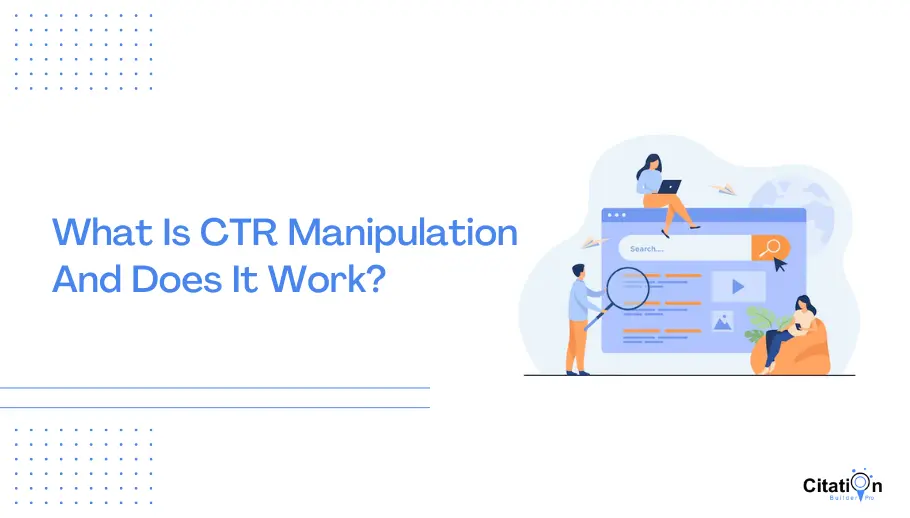Boost Your Ad Efficiency With Smart CTR Adjustment
In the competitive landscape of electronic marketing, optimizing your click-through rate (CTR) is critical for enhancing general project performance. Strategic control of CTR can yield considerable renovations, driven by customized content, involving visuals, and specific audience segmentation. Recognizing the nuances behind efficient CTR strategies is vital for accomplishing these outcomes. As we discover various optimization techniques and the tools offered for tracking success, the inquiry continues to be: how can you implement these strategies to genuinely boost your advertisement performance?
Comprehending Click-Through Rate
Comprehending Click-Through Rate (CTR) is important for assessing the efficiency of digital marketing strategies. CTR is a metric that shows the percent of customers that click a certain web link compared to the total number of customers that check out the connected material, such as an advertisement or email. It acts as a vital efficiency sign (KPI) in internet marketing, reflecting the ability of a project to involve its audience.
A high CTR frequently signifies that the web content is compelling and pertinent to the target market, while a low CTR might show the requirement for optimization. CTR Manipulation. Factors affecting CTR consist of ad positioning, layout, messaging, and audience targeting. Online marketers must assess these aspects to enhance efficiency and drive much better outcomes
Additionally, comprehending CTR permits services to make informed choices regarding their marketing methods. By monitoring adjustments in CTR in time, marketers can recognize trends, examine the impact of numerous strategies, and allot resources properly. Essentially, a comprehensive grip of CTR is important for recurring improvement and success in electronic marketing, giving insights that assist the adjustment of campaigns to maximize interaction and conversion rates.

Relevance of CTR Control
Adjusting Click-Through Rate (CTR) properly can considerably boost the efficiency of electronic advertising campaigns. A higher CTR indicates that a bigger percentage of users are engaging with an ad, which is commonly a representation of its significance and appeal. This engagement not only enhances the presence of the advertisement but additionally signifies to internet search engine and social media sites platforms that the material is useful, possibly leading to much better positions and lower costs-per-click.
In addition, a well-managed CTR can optimize budget plan allowance, making it possible for online marketers to focus resources on the most reliable campaigns. This enhances roi (ROI) and can cause raised conversions. In addition, understanding and manipulating CTR allows online marketers to get understandings right into target market actions, choices, and involvement patterns, fostering more informed decision-making.
In a competitive digital landscape, the significance of CTR control can not be overstated. It serves as both an efficiency statistics and a calculated device, encouraging marketing experts to fine-tune their techniques, dressmaker material, and ultimately achieve their marketing objectives more successfully. By focusing on CTR, services can not just enhance their marketing results however likewise grow stronger links with their target audiences.
Secret Strategies for Improvement
How can marketing experts properly enhance their Click-Through Rate (CTR)? One fundamental method involves maximizing ad duplicate.
Another reliable method is to utilize target market division. By tailoring advertisements to particular segments based upon demographics, interests, CTR Manipulation Press Release and actions, online marketers can develop a lot more relevant material, thereby enhancing involvement and CTR. Customization can enhance customer experience and foster a connection with possible consumers.
Furthermore, including attractive visuals can boost advertisement appeal. Top notch photos or videos that align with the message can attract attention and motivate users to click.
A/B testing is an important practice. By comparing various variations of ads, marketing professionals can pinpoint which aspects drive greater CTR, making it possible for data-driven decisions for future campaigns.
Last but not least, ensuring mobile optimization is important, offered the increasing number of individuals accessing web content via mobile phones. Ads need to be receptive and visually appealing across all systems to optimize CTR properly. Applying these approaches can lead to noticeable improvements in ad performance.
Tools for Tracking CTR
A range of devices are offered to efficiently track Click-Through Rates (CTR), allowing marketing professionals to obtain beneficial understandings right into their advertisement efficiency - CTR Manipulation. These devices can vary from thorough analytics systems to details monitoring software designed for particular ad formats
Google Analytics stands out as a durable alternative, offering detailed records on customer communications, consisting of CTR metrics. By incorporating Google Tag Manager, online marketers can quickly track clicks on details advertisements while keeping track of user actions throughout different channels.
One more noteworthy tool is SEMrush, which supplies competitive evaluation features along with CTR tracking, allowing marketing professionals to benchmark their performance versus industry criteria. Furthermore, systems like HubSpot provide integrated analytics for email projects and landing web pages, helping with straight dimension of CTR and conversion prices.
For social networks advertising, tools such as Facebook Ads Supervisor and LinkedIn Project Manager supply real-time CTR information, allowing marketers to readjust their methods instantly based on efficiency outcomes.
Integrating these devices into a total advertising strategy not just help in tracking CTR but likewise boosts decision-making processes, causing boosted ad performance and raised ROI. CTR Manipulation.
Measuring Success and Changing

To determine success properly, it is essential to establish criteria based upon historic information or sector criteria. These benchmarks offer a recommendation point for examining present efficiency and recognizing locations for renovation. Devices for tracking CTR, as reviewed formerly, play a vital role in this process, enabling online marketers to gather data efficiently.
Once performance metrics are collected, the next step entails assessing fads and patterns. If CTR is less than anticipated, it might suggest the requirement for innovative modifications or audience refinement. Conversely, if conversion prices are high yet CTR is reduced, concentrating on enhancing visibility might be advantageous.

Verdict
In final thought, efficient click-through rate (CTR) control dramatically boosts ad efficiency through calculated optimization techniques. Routine surveillance of CTR metrics using analytics tools facilitates data-driven changes, making certain constant improvement and maximization of engagement.
 Danny Tamberelli Then & Now!
Danny Tamberelli Then & Now! Tia Carrere Then & Now!
Tia Carrere Then & Now! Ben Savage Then & Now!
Ben Savage Then & Now! Jason J. Richter Then & Now!
Jason J. Richter Then & Now! Anthony Michael Hall Then & Now!
Anthony Michael Hall Then & Now!